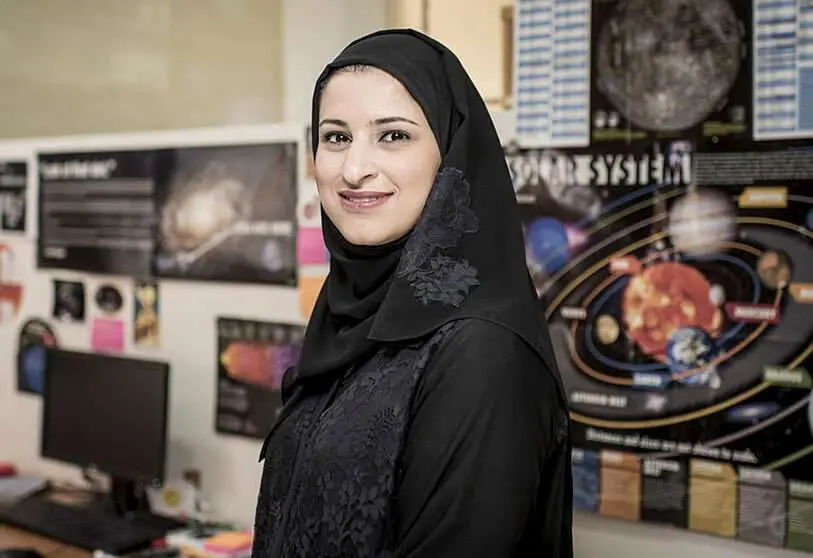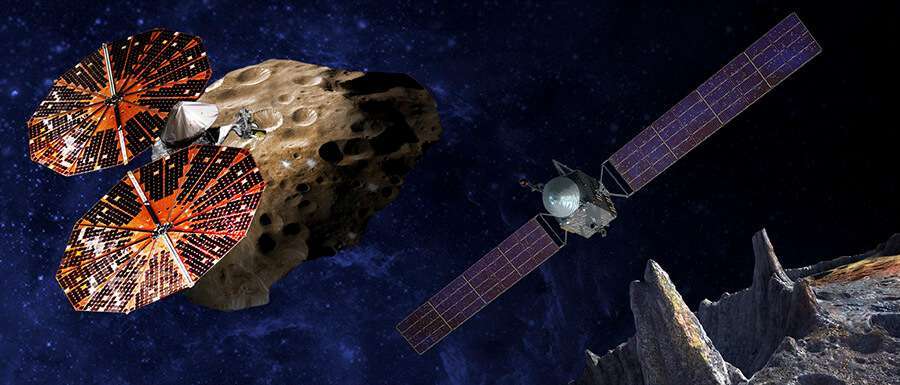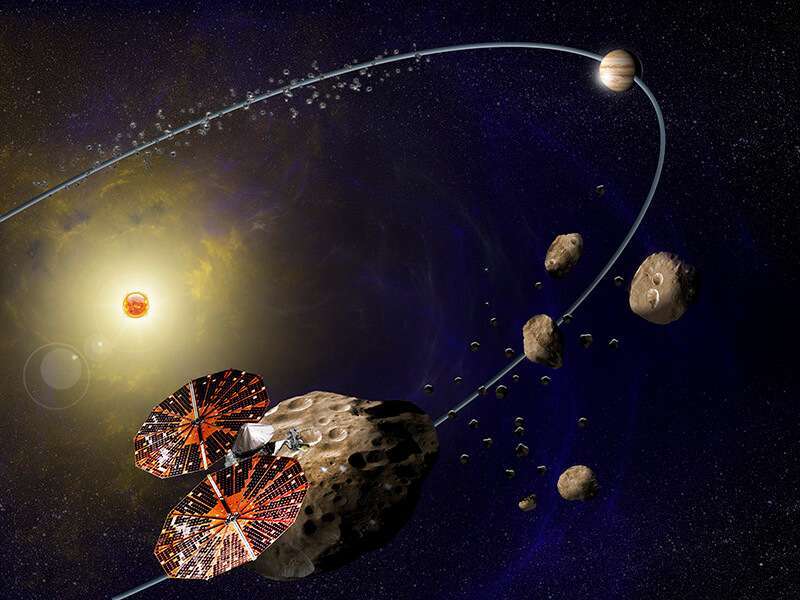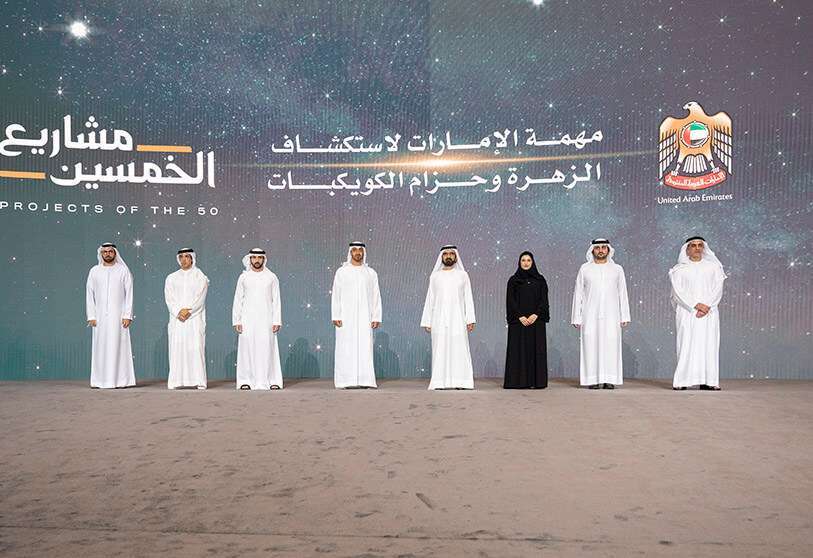Emirates wants to land on one of the asteroids lurking beyond Mars

The Union of Arab Emirates has committed itself to the most ambitious space initiative it has ever undertaken. And it has done so in the midst of celebrating the 50th anniversary of the country's founding.
The project that has just been made public, whose name has not yet been revealed and whose development will last for the next six years, its main purpose is to explore a total of seven bodies in the asteroid belt between Mars and Jupiter between 2030 and 2033. This part of the Solar System is the source of most of the planetary objects that pass close to Earth and represent a potential impact risk and a danger to life on our planet.

The new mission will also set its sights on Venus, our closest planetary neighbour to the Sun. In the words of the Minister of Advanced Sciences and President of the Emirates Space Agency, Sarah Al Amiri, it exceeds expectations and is "five times more complex" than the Martian probe Al Amal, launched in July 2020 and which since February has been gathering information about the atmosphere of Mars, our neighbour beyond the Sun.
The difficulty of the mission is so great because at the end of its trajectory, the probe will attempt to land on the surface of the last of the asteroids it has visited. And the lack of gravity on any of them means that the descent of a probe on an asteroid involves great difficulties that are very difficult to overcome from a technological point of view.

The announcement of the project took place on 5 October at a ceremony attended by the country's leading authorities, led by Sheikh Mohammed bin Rashid Al Maktoum, Vice President, Prime Minister and Ruler of Dubai. A driving force behind the UAE's presence in space exploration, which he sees as a national priority, "our journey towards development and progress has no boundaries and no limitations because we are investing for generations to come," he said.

Its launch into space is scheduled for 2028 from Japan and aboard the new H-III rocket or the reliable and veteran H-IIA, the one responsible for putting the Al Amal probe on its way to Mars. Technologically, the project is led by the Laboratory for Atmospheric and Space Physics (LASP) at the University of Colorado, Boulder, which already played such a role in the Al Amal mission to the Red Planet.
If Emirates succeeds in the challenge of landing on an asteroid, it would be the third country to do so, after the United States and Japan. But it would be the fourth if China does it first with its Zheng He probe, due to take off in 2025 and collect samples from asteroid 469219 and bring them back to Earth.

Internationally regarded as the nation with one of the world's fastest-growing space programmes, the announcement of the project is likely to pique the interest of thousands of attendees at the 72nd International Astronautical Congress in Dubai from 25-29 October. Although the details of the mission - instruments, science objectives and solar shields - are said to be announced in 2022, it is quite possible that the limited information provided so far will be expanded upon during one of the Congress sessions.
The new interplanetary mission is designed to further accelerate Emirati space engineering, scientific research and exploration capabilities, and to drive innovation and opportunities in the private sector. It is intended to give Emirati companies priority in space-related contracts, help establish space companies in the country, help train young engineers and technicians, and increase collaboration between US and Emirati universities and research centres.
Despite its proximity to our Blue Planet, Venus is very different in size and evolution from Earth. Its average surface temperature is around 471 degrees Celsius, making it the hottest planet in our solar system. In addition, scientists' knowledge of it still raises major questions. For example, there is no certainty as to whether it ever had seas or oceans. Nor about the composition of its atmosphere.

The UAE's interest in outer space matters materialised in 1997 with the launch of its first commercial communications satellite, Thuraya, which has been followed by others. It took more than 20 years for it to return in 2019 with another project: sending its first astronaut, Hazza Al Mansouri, to the International Space Station.
In February this year it became one of five countries to place and maintain a space probe around Mars, it is developing the Rashid lunar rover, and a few months ago it added two young astronauts - a man and a woman - to its manned space project.

In the United States, NASA's Bill Nelson is preparing to send a similar mission into space from Cape Canaveral, off the coast of Florida. Named Lucy, it will also fly over seven asteroids between 2025 and 2033. Built by Lockheed Martin Corporation, it has two large circular solar panels to generate the power needed to operate its on-board instruments. Its launch window opens on 16 October and closes on 7 November.
Six of them are so-called "Trojans", the name given to those in the orbit of Jupiter - which follow Jupiter in its path around the Sun - and are not in the main belt between Mars and Jupiter. These are objects that originated in different parts of the solar system, which have subsequently undergone a kind of hodgepodge of asteroids of very different kinds.









